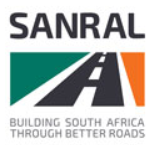More convenience for motorists at toll plazas
The battle to combat traffic congestion at toll plazas is becoming a problem of the past, thanks to technology. Previously, it was normal for drivers to stop at a toll booth, make a cash or credit card payment and then wait for the boom to be raised before proceeding. This has changed due to the evolution of Electronic Toll Collection (ETC) which has introduced new ways for motorists to pass through tolls without any delays.
This has improved traffic management by ensuring safe and free-flowing traffic.
Bakwena Platinum Corridor Concessionaire, which is one of the concessionaires of the South African National Roads Agency (Sanral), has embraced this since 2002 and went one step further by introducing electronic movable barriers. This technology makes it possible to increase the number of lanes at toll plazas to accommodate more vehicles during peak hours.
According to Liam Clarke, Commercial Manager at Bakwena, the movable barriers make it quicker and easier to reverse the lanes which give capacity to move more traffic travelling in one direction during peak times. Thus, if a plaza originally has 12 lanes, with six lanes per direction, the barriers can be moved to extend the lanes from six to eight for heavy traffic in one direction while reducing the six to four lanes in the opposite direction without any interruptions.
Bakwena is the first toll road to introduce the barriers in the country, starting at two of its plazas: Doornpoort and Pumulani.
"We had a capacity problem at Doornpoort, because we couldn't move the barriers. We were unable to process the demand of 3 500 vehicles per hour, and were only managing 3 100. We would not have been able to change this if we didn't have e-tags and the moveable barrier," said Clarke. Using tag lanes and the movable barriers increased capacity and thus the ability to process more vehicles with a reduction in delays and congestion.
The operation of the barriers requires training because the barrier has to move at a different speed over its length. When one section moves 20 metres, the other section has to move only 10 metres to the point where it is required. Also the design is unique: the barriers need to be heavy enough so that the wind doesn't affect them and keep vehicles in correct lanes, but light enough to allow ease of movement.
Previously it took longer and required more people because the cones were picked up manually whereas with the electronic ones the entire system is operated by one person. It is much safer because there are fewer people moving around between passing vehicles.
